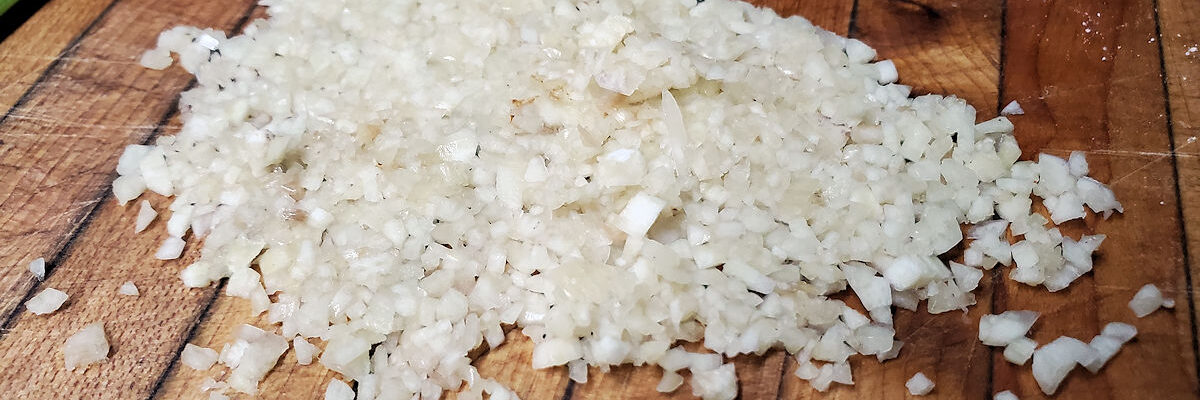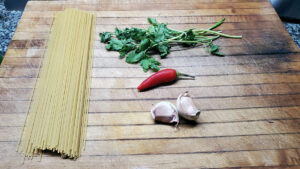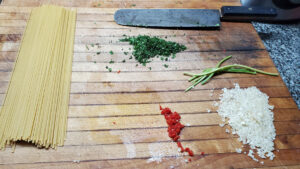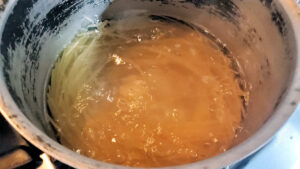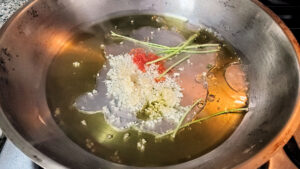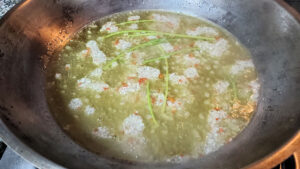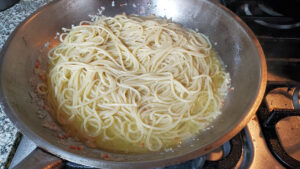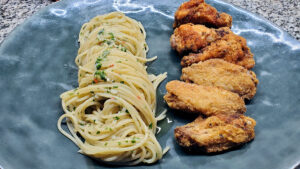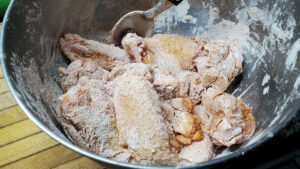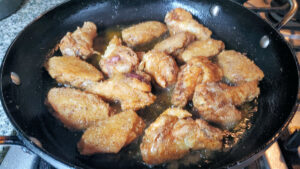I keep thinking that maybe this approach to pastas staying at a very simple level is going to get boring for readers. And, I’m sure that it is for some. But based on messages and emails, apparently it’s resonating, mostly with a “oh, that’s how to get that to work” or “oh, that’s why the way I do it doesn’t work”, vibe. And a lot of requests for specific simple pasta dishes that people want to know why when they make it at home it doesn’t come out the way it does when they go to a restaurant, or someone’s grandma’s house. So I’m going to keep going, scattering these in (there have been a few more than I might normally do in a row because Henry’s in Peru and I’ve been being a bit stay-at-home for a few weeks. They’ll spread out a bit more once he’s back and we’re being more social, eating things he likes, and all that.
So, stepping outside of the four famed pastas of Rome (plus Alfredo), we head a little south to Campania, the Italian state around Naples. The birthplace of pizza and dried pasta, or so the legends go. And today we’ll look at what is probably the region’s simplest pasta, the famed Spaghetti aglio e olio, or garlic and oil spaghetti. Neapolitan pastas have a tendency towards stronger flavors than the pastas of its neighbor to the north in Rome, and though simple, this one is no exception. We need only a few simple ingredients – spaghetti, garlic, chili (traditionally a Calabrian peperoncino, though in modern day, particularly outside of Italy, often a tabasco or cayenne chili, which is what i used), and parsley. Also, off photo, good olive oil and a pot of salted water (again, 1 Tb coarse salt to a liter of water – you’re fine if it’s a quart – if you’re using fine ground salt, i.e., table salt, use two teaspoons).
Finely chop the garlic, chili, and parsley leaves. Keep the parsley stems. And as this isn’t intended to be a fiery hot recipe, I remove the seeds and veins from the chili. Note, you could also use chili flakes for this, though I like the flavor of the fresh chili better.
Get your spaghetti into the boiling water. As I’ve talked about in the past posts – just enough water to cover. I know, I too was brought up thinking you need lots more water. But this thing has been actually studied, and it really does go faster if you use a smaller amount, and, you get a much starchier water, which is key to the final sauce consistency. Much smarter folk than I have done the work on this one, like Harold McGee and Kenji López-Alt.
With the spaghetti in the water, put your olive oil, garlic, chili, and parsley stems into a skillet, and add a roughly equal amount of the pasta water in comparison to the olive oil. Bring it to a simmer.
With some stirring, the starchy water and oil will start to emulsify. Also, the water prevents the garlic and chili from browning or burning, instead flavoring the oil and sort of poaching the sharpness out of each. Add more water, a little at a time, to keep it from turning into just oil that starts to fry the aromatics. When the spaghetti is about two minutes short of its full cooking time, remove the parsley stems…
…and add the spaghetti to the skillet and start stirring and tossing. It will finish cooking in the water that’s in the skillet, and at that point, the oil will now be emulsified and cling to the pasta. If the water all absorbs or evaporates before the spaghetti is cooked, add a splash more of the starchy water. Add in the chopped parsley, give it a good final toss and stir.
And serve. Sorry, I missed taking a photo of the final spaghetti in the skillet. You’ll live.
I had decided on some spicy fried chicken to accompany this pasta. You could eat it on its own, but I wanted it more as a side dish. I just took chicken wing segments and tossed them in cornstarch that was flavored with salt, pepper, and chili powder, and then pan-fried them in vegetable oil. That’s my kind of lunch!
Stay tuned, next time, we look at the final two of the quartet of famed Roman pastas, amatriciana and carbonara. Not sure if I’ll make those one post or two. We shall see.
